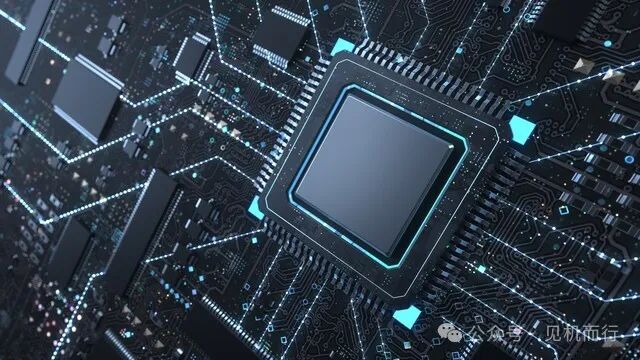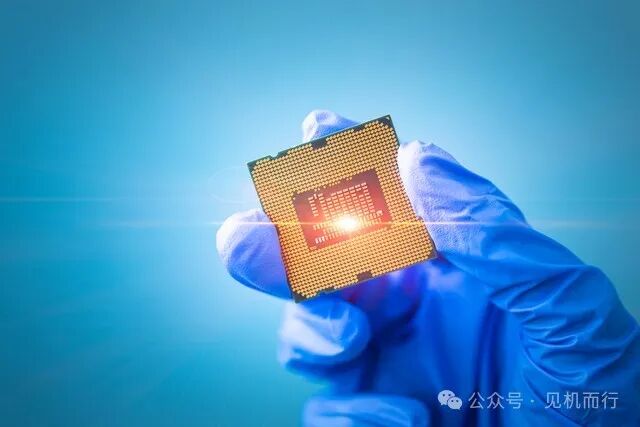(Friends who are not interested in the technical background can skip directly to the practical content below)
1. Definition and Significance of Wafer Fabrication
Wafer fabrication is the core process of semiconductor manufacturing, referring to the submission of chip design layout data to a wafer foundry for trial production. Through processes such as photolithography, etching, and doping, the design is transformed into physical chips, verifying their feasibility and performance, which provides the basis for subsequent mass production. The core lies in wafer manufacturing (i.e., “wafer fabrication”), rather than packaging and testing, thus becoming a key standard for determining the origin in current international trade.
2. The Process of Wafer Fabrication
The wafer fabrication process involves a complex series of steps, mainly divided into the following stages:
1. Silicon Material Purification and Wafer Preparation
Cutting high-purity silicon ingots into wafers, followed by polishing, cleaning, and other pretreatments.
Single crystal silicon ingots are produced using the Czochralski (CZ) method or the Float Zone (FZ) method to ensure uniform wafer structure.
2. Photolithography and Patterning
Photoresist Coating: Coating the wafer surface with photoresist and exposing it to ultraviolet light through a mask to form circuit patterns.
Etching and Ion Implantation: Using dry or wet etching to remove excess material, and forming P-type/N-type semiconductor regions through ion implantation to construct transistor structures.
3. Metallization and Interconnection
Depositing metal layers on the wafer surface through processes such as Chemical Vapor Deposition (CVD) and Physical Vapor Deposition (PVD) to form circuit interconnections.
4. Testing and Verification
WAT Testing: Verifying the electrical characteristics of the wafer (such as threshold voltage, resistance, etc.).
CP Testing: Using probes to test the functionality of individual chips, marking defective chips to save packaging costs.
5. Dicing and Packaging
Cutting the wafer into individual chips, followed by packaging and final testing.

3. Related Listed Companies in A-shares
(Ranked by market capitalization)
1. SMIC (Semiconductor Manufacturing International Corporation)
Business: Primarily engaged in wafer foundry services, covering multiple fields including logic, memory, and RF.Core Competitiveness: Capacity expansion supported by policies, high yield in mature processes, breakthroughs in advanced process R&D.Outlook: Benefiting from domestic substitution and global supply chain restructuring, but needs to overcome EUV lithography machine limitations to achieve higher-level processes.
2. Haiguang Information
Business: Domestic x86 architecture CPU/DCU, applied in servers and data centers.
Core Competitiveness: x86 licensing and localization of technology, performance close to international levels, compatible with the domestic Xinchuang ecosystem.Outlook: Growth driven by demand for cloud computing and AI computing power, but needs to face competition from ARM architecture.
3. Cambricon
Business: AI training and inference chips (such as the Siyuan series), domestic AI chip supplier.Core Competitiveness: Self-developed NPU architecture, first-mover advantage in cloud chip commercialization.Outlook: Dependent on the explosion of the AI industry, but faces profitability pressure and competition from giants.
4. Northern Huachuang
Business: Full industry chain coverage of semiconductor equipment, high market share in etching and thin film deposition equipment, with a market value exceeding 240 billion by 2025.
Core Competitiveness: Complete range of equipment types, benefits from domestic substitution policies.
Outlook: Equipment demand driven by domestic wafer factory expansion, but needs to overcome core technologies of high-end equipment.

5. Will Semiconductor
Business: CMOS image sensors, power semiconductors, with a market value exceeding 180 billion.
Core Competitiveness: Customer resources in mobile and automotive sectors, ability to provide customized solutions.Outlook: The intelligence of automobiles drives demand for in-vehicle CIS, but needs to cope with industry cycle fluctuations.。
6. Zhongwei Company
Business: Etching and MOCVD equipment, with 5nm etching machines entering TSMC’s supply chain.Core Competitiveness: Internationally leading technology, high R&D investment.Outlook: Broad space for domestic production of advanced process equipment, but needs to expand more customers.
7. Huahong Company
Business: Specialty process foundry (power devices, MCU), with capacity utilization in 2023 affected by industry cycles.Outlook: Demand from automotive electronics and IoT supports long-term growth, with accelerated capacity expansion.
8. Lanke Technology
Business: Memory interface chips (leading market share in DDR5), benefiting from server upgrades.
Outlook: Growth driven by data center construction and increased penetration of DDR5, but needs to face risks of industry technology iteration. 。
9.GigaDevice
Business Composition: Focused on memory chips (second in global market share for NOR Flash), MCUs (automotive-grade expansion), and sensors, covering IoT and automotive electronics.Core Competitiveness: Leading high-performance low-power technology for NOR Flash, Fabless model for light asset operation, deep cooperation with supply chains like SMIC, and R&D investment to strengthen storage and MCU autonomy.Outlook: Benefiting from domestic substitution in storage, demand for AI terminals, and incremental automotive-grade MCUs, with net profit continuing to grow and financial stability supporting diversified layouts.
10. Rockchip
Business Composition: Focused on SoC chips (AI glasses, NPU), digital audio and video processing (such as RK series), with layouts in machine vision, smart hardware, and IoT.Core Competitiveness: Deep accumulation of audio and video chip technology, rapid implementation of AI application solutions, supply chain adjustments ensuring delivery, with clients including leading manufacturers like Xiaomi.Outlook: AI drives explosive performance, but needs to be wary of valuation fluctuations; demand for machine vision and edge computing may become new growth points, with supply chain stability to be observed.